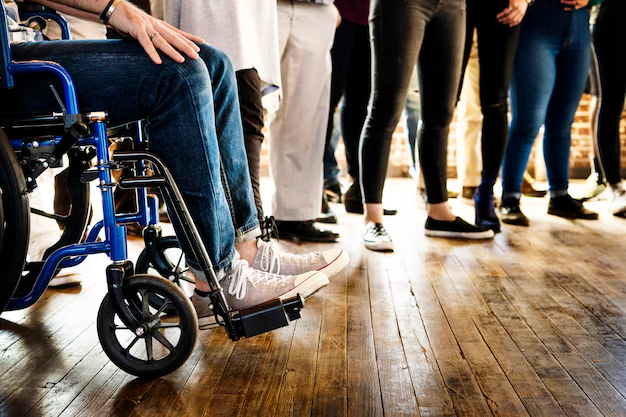Navigating Assisted Living for People with Disabilities: Empowering Choices and Exploring Options
Assisted living offers a supportive environment tailored to individuals requiring help with daily activities, but when it comes to people with disabilities, selecting the right facility involves unique considerations. If you're exploring assisted living options for yourself or a loved one with a disability, this guide is designed to provide you with a deeper understanding and practical insight into what to expect and how to make the best decision.
Understanding Assisted Living: A Foundation
Assisted living is a form of housing designed for individuals who need assistance with some daily activities but do not require the intensive care offered by a nursing home. Residents typically have their own private or semi-private apartments, and services are provided to support daily living. These may include help with bathing, dressing, medication management, transportation, and meals.
Key Features of Assisted Living
- Personalized Care Plans: Support services tailored to the individual's specific needs and preferences.
- Social Engagement Opportunities: Activities and programs to promote interaction and community involvement.
- Safe Environment: Design features such as grab bars, ramps, and emergency call systems enhance safety and accessibility.
- Location Considerations: Facilities are often located near shopping centers, healthcare providers, and other essential services.
Special Considerations for Disabilities
While the basic framework of assisted living applies to those with disabilities, unique needs necessitate additional considerations.
Assessing Specific Needs
- Accessibility: Ensure the facility is fully accessible, including wheelchair-friendly spaces and easy-to-navigate layouts.
- Specialized Staff Training: Staff should be trained to support specific disabilities, whether physical, intellectual, or sensory impairments.
- Customized Activity Programs: Look for facilities that offer or are willing to develop specialized activities catering to the resident’s abilities and interests.
- Therapeutic Services: Access to occupational, physical, or speech therapy as needed.
Types of Disabilities and Their Impact on Assisted Living Choices
Disabilities can be broadly categorized, each impacting living choices differently. Here's how:
Physical Disabilities
People with physical disabilities might face mobility challenges, necessitating barrier-free environments. Facilities should provide:
- Enhanced Accessibility: Features like elevators, wide doorways, and step-free access are critical.
- Adaptive Equipment: Provision of or accommodations for devices such as wheelchairs or walkers.
Intellectual and Developmental Disabilities
These disabilities can include conditions like Down syndrome or autism, often requiring careful attention to routine and specialized activities.
- Structured Environments: Routine-focused living spaces promote consistency and predictability.
- Engaging and Safe Environments: Activities that stimulate and engage residents, ensuring they feel valued and active.
Sensory Disabilities
Individuals with visual or hearing impairments require different adaptations in their environment.
- Communication Aids: Use of visual cues or alternative communication devices if needed.
- Environment Modifications: Enhanced lighting or alert systems (e.g., vibrating beds, flashing fire alarms) to support sensory needs.
Financial Considerations and Insurance
Understanding the financial aspects is crucial in planning for assisted living.
Cost Breakdown
Costs can vary significantly based on location, services provided, and facility quality. Typically, they include:
- Base Fees: Covering room and board, typically including utilities and meals.
- Care Services Fees: Additional fees for medical and personal care services.
- Activity Fees: Costs associated with on-site or off-site activities and excursions.
Funding Sources
Explore potential funding sources to help manage costs, including:
- Government Programs: Medicaid, Social Security Disability Insurance, or Supplemental Security Income may offer assistance.
- Private Insurance Plans: Long-term care insurance may cover some services.
- Nonprofit Assistance: Some organizations offer grants or scholarships based on need.
Evaluating Assisted Living Facilities
Selecting the right facility is a critical decision. Here's how to approach it:
Initial Research
Begin with online research, unbiased reviews, and recommendations, focusing on facilities that specialize in disability care.
Visiting Facilities
During visits, pay attention to:
- Staff Interaction: Observe how staff engage with current residents.
- Facility Cleanliness and Maintenance: Consistently maintained environments indicate a commitment to quality care.
- Resident Feedback: Interact with current residents or their families for genuine insights.
Advocacy and Rights in Assisted Living
Ensuring the rights and advocacy for people with disabilities in assisted living is a priority.
Residents' Rights
Residents have a right to privacy, respect, and freedom to make personal choices. Understand these rights and ensure the facility respects them.
Advocacy Groups
Look for local or national advocacy groups that can provide support or mediation if issues arise.
Making the Transition Smooth
Transitioning to assisted living can be challenging, but planning and communication make it easier.
Pre-Move Planning
Involve the resident in planning stages, organizing personal belongings, and setting up their new space to feel familiar and comfortable.
Ongoing Communication
Maintain regular contact and visits to help the resident adapt and address any emerging concerns promptly.
✨ Quick Reference Summary
- Personalized Plans: Prioritize facilities offering tailored services to the resident's unique needs.
- Financial Options: Research funding avenues, including government assistance and insurance.
- Accessibility and Safety Features: Evaluate physical attributes of the facility to ensure full accessibility and safety.
- Advocacy and Rights: Stay informed about residents' rights and engage advocacy groups if necessary.
Embracing a comprehensive approach ensures that assisted living enhances quality of life while respecting the dignity and individuality of people with disabilities. Through careful exploration and thoughtful decision-making, you can support smoother transitions and create empowering living conditions tailored to those they serve.

Related Topics
- 11 Signs It Might Be Time For Assisted Living
- 2 Bedroom Assisted Living Near Me
- 305 West End Assisted Living
- 5 Levels Of Care In Assisted Living
- a Banyan Residence Assisted Living Resort Facility
- Abernethy Laurels Assisted Living
- Activities For Seniors In Assisted Living
- Adult Assisted Living
- Advantage Assisted Living
- Aegis Moraga Assisted Living